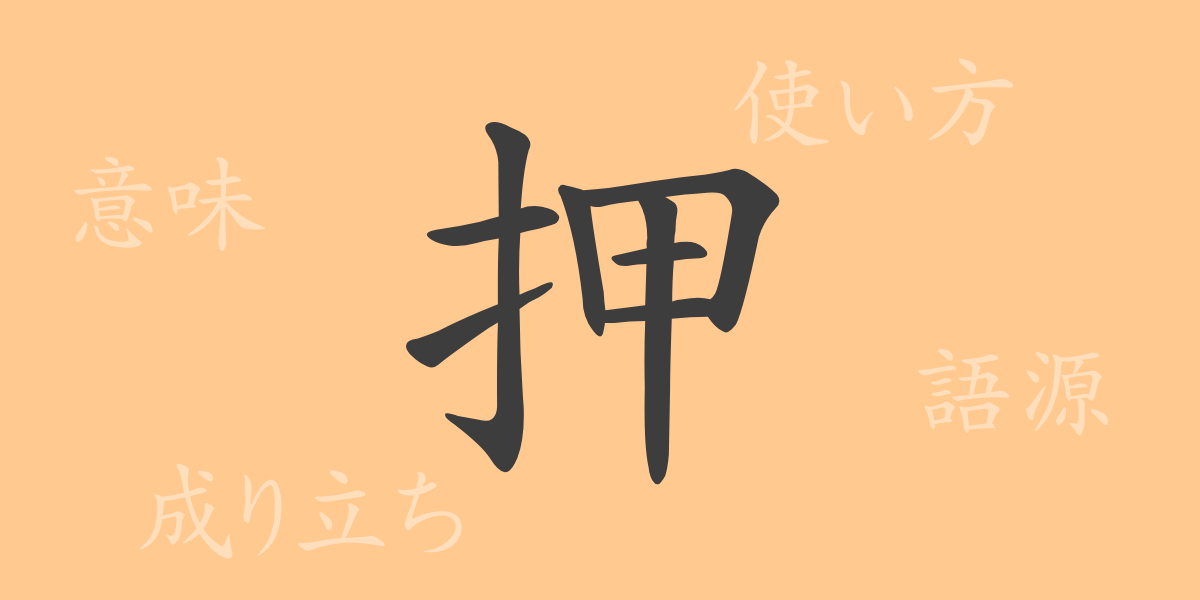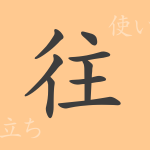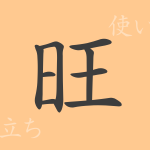“
Japan’s character culture has developed uniquely along with its deep history. “”押”” ( ō), one of the common kanji characters, is an example of a character with rich expressive power and a wide range of meanings. In this article, we will delve into the charm of “”押”” (ō) and provide a detailed explanation of its origin and modern usage. Let’s embark on a journey to rediscover the depth of meaning and the richness of Japanese expression in this frequently encountered kanji.
The Origin (Etymology) of 押 ( Ō)
The kanji “”押”” (ō) is derived from ancient Chinese pictographs. Originally, it was a pictogram depicting the act of pressing something down with one’s hand. Its shape consists of a radical meaning “”hand”” at the top and a form showing the compression of “”甲”” (kō) at the bottom. Over time, “”押”” ( ō) has come to be used as a kanji meaning the action of pressing something with one’s hand.
The Meaning and Usage of 押 (Ō)
“”押”” (ō) has meanings such as “”to press,”” “”to push forward,”” and “”to affix a seal.”” In terms of usage, it is used to indicate the physical act of pressing something or metaphorically to express strongly asserting something. Additionally, the usage of “”押印”” (ōin), meaning to affix one’s seal on a contract or document, is common.
Reading, Stroke Count, and Radical of 押 (Ō)
The kanji “”押”” ( ō) has several readings, which vary depending on the situation in which it is used.
- Reading: The on’yomi is “”ō,”” and the kun’yomi includes “”o.su,”” “”o.shi,”” “”o.saeru,”” etc.
- Stroke Count: A total of 8 strokes
- Radical: Classified under the hand radical (Tehen)
Idioms, Phrases, and Proverbs Using 押 ( Ō) and Their Meanings
There are numerous idioms, phrases, and proverbs in Japanese that include “”押”” (ō). For example, “”押し切る”” (O-shi-kir-u) means to ignore opposing opinions and push through with one’s own will, while “”押し通る”” (O-shi-tō-ru) means to overcome difficulties or obstacles and achieve one’s goal. Additionally, “”一押し”” (Hitoo-shi) is used to express a strong recommendation or to refer to the object being recommended.
Summary of 押 (Ō)
The kanji “”押”” (ō) has diverse meanings derived from its shape and is widely used in the Japanese language. From the physical act of pressing to the expression of will and even social contracts, “”押”” (ō) is an indispensable presence in the lives of Japanese people. We hope that through this article, you have been able to catch a glimpse of the rich expressive world that “”押”” ( ō) possesses. The next time you encounter this kanji, try to recall the history and meaning behind it.
“

























